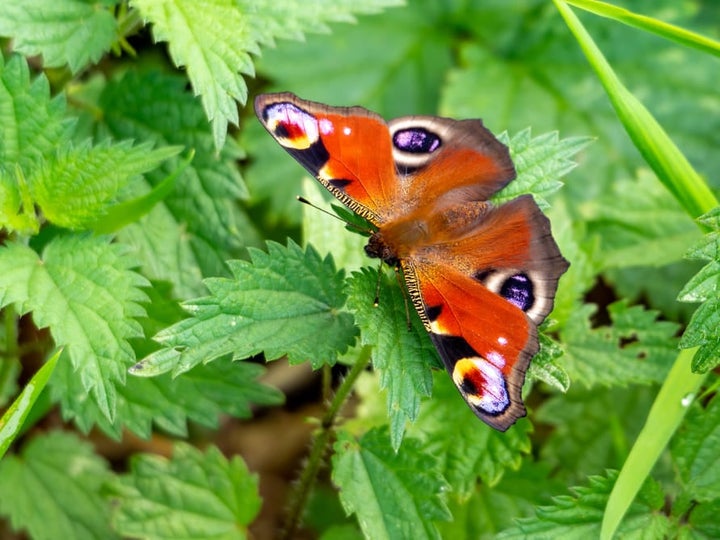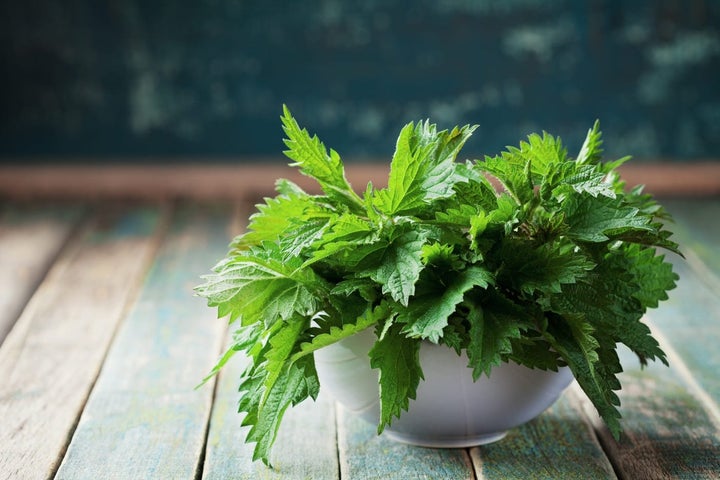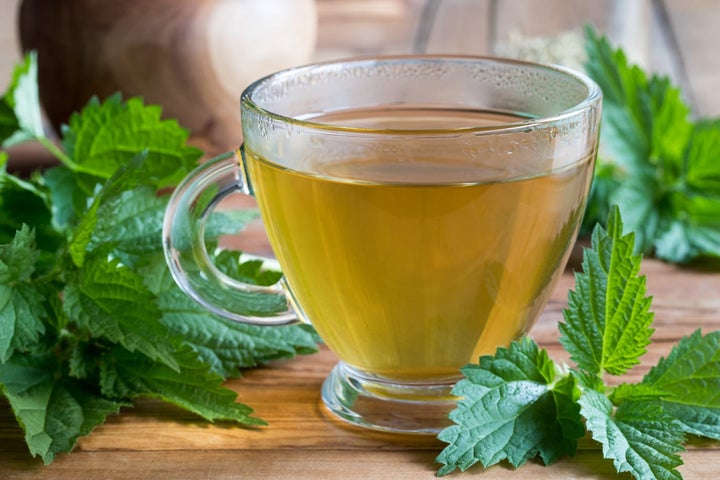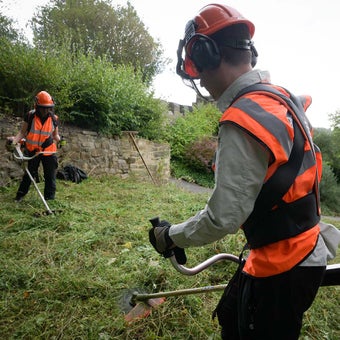
Quick facts
Urtica dioica is the botanical name for the common stinging nettle, a UK native plant
Urtica urens is the botanical name for the small stinging nettle; it is widespread in the UK
Stinging hairs are present on the leaves and stems of both species, giving rise to their common names
Nettles are an important food plant for the caterpillars of many butterflies and moths
If you need to control nettles, non-chemical methods are easy and effective
What do nettles look like?
Common stinging nettles and small stinging nettles are similar in appearance, but their size and growth habits differ:
Common stinging nettle (Urtica dioica) is a herbaceous with creeping horizontal stems and spreading roots that survive through winter and produce new growth each spring. Upright stems can reach a height of 2m (6½ft) in fertile soils. Its leaves appear in opposite pairs and are oval with pointed tips and serrated edges. Each leaf is about 8cm (3in) long. Fine hairs cover the leaves and stems; some sting when touched, but many of the smaller hairs don’t. Pendulous catkin-like flowers are produced from late spring to early autumn. Flowers can be cream or pale brownish- or greyish-green, sometimes with tints of purple. are tiny, brown and roughly oval-shaped.

Did you know?
The species name dioica refers to the plant being dioecious (bearing male and female flowers on separate plants). The flowers on male plants release small puffs of pale yellow pollen, relying on the wind to transport it to female flowers.
Small stinging nettle (Urtica urens) is an , usually shorter than 60cm (24in) tall. Its leaves are similar in shape to those of the common stinging nettle but are typically about half the size, approximately 4cm (1½in) long. Stinging hairs usually cover the leaves and stems. Clusters of small, pale green flowers appear in summer, with male and female flowers produced on the same plant (monoecious).

Treating a nettle sting
It is widely believed that rubbing a dock leaf on a nettle sting helps to ease the discomfort. This may be due to a cooling effect caused by sap from the leaf, or may simply be a placebo. While there is little scientific evidence to prove that dock leaves help remedy nettle stings, they are often to hand, growing in the same places as nettles, so it is still worth giving them a try. Alternatively, washing the affected area with soap and water will help ease the stinging.
Are stinging nettles weeds?
Stinging nettles are fantastic plants for wildlife, with the Biological Records Centre listing over 100 species of invertebrates that use the common stinging nettle as a food plant. These include small tortoiseshell, red admiral, comma, painted lady and peacock butterflies, and garden tiger, flame and buff ermine moths. Both species of stinging nettles also support numerous garden birds, with reed buntings, bullfinches, serins and siskins known to eat their seed.



Stinging nettles are useful plants for people too. Their new spring growth can be harvested as a leafy vegetable, made into soup and tea, or used to make environmentally-friendly homemade fertiliser.
So, while you may want to control or remove stinging nettles in some areas of your garden, such as in ornamental borders where they could outcompete other plants, many gardeners are now welcoming these ‘weeds’ and adding them to wildlife patches and less cultivated areas.
What is a weed?
The term ‘weed’ describes a plant that is growing where it isn’t wanted. Weeds usually thrive in average garden conditions, reproducing and spreading easily. It is up to you to decide what you call a weed and what you choose to retain or remove.
Frequently asked questions about controlling stinging nettles:
Here are our answers to your most common questions about dealing with stinging nettles:
How invasive are stinging nettles?
Common stinging nettles spread by seed, (underground stems) and stolons (rooting stems that grow along the ground). They thrive and spread quickly in rich, moisture retentive soil; in poor, dry soil, their spread will be much slower. As the root system is usually quite shallow, with most roots found in the top 20cm (8in) of soil, and plants can regenerate from sections of rhizome or stolon, they may be spread unintentionally by gardeners chopping them up when digging.
Small stinging nettles are annual, so they release large amounts of seed to ensure successful reproduction. Some seed can ripen as early as June, with further flowering and seed production continuing until plants are killed by frost. Seed from common and small stinging nettles may land close to the parent plant but can also be transported long distances by animals. Depending on the soil conditions, seed can remain viable for many years.
The good news is that you can easily control the spread of stinging nettles by deadheading and removing or roots that spread beyond their allotted area, so there is space in almost all gardens for this valuable wildflower.
Top Tip
Wear gloves and cover skin when handling stinging nettles to avoid irritation from stinging hairs.
Do I need to get rid of stinging nettles?
No – allowing stinging nettles to grow in a wildlife corner, under established hedges or in less-cultivated areas is a great way to boost the of your garden. You could even grow a small patch at one end of a veg bed for making liquid fertiliser or to harvest as an edible crop. Young stinging nettle leaves are a tasty and nutritious green vegetable similar to spinach, and can be used to make nettle tea.



However, as stinging nettles are capable of outcompeting and smothering smaller or less vigorous plants, it’s a good idea to manage their spread and stop them getting out of bounds.
Top Tip
If you choose to remove or cut back stinging nettles, use the shoots to make a free, natural, environmentally-friendly liquid fertiliser. For information on making and using natural plant feeds, including nettle liquid feed, see our page on fertilisers.
What is the easiest way to kill stinging nettles?
If you have stinging nettles growing where they are not wanted, there are a few easy ways to remove them:
- Deadhead – snip off the spent flowers of common stinging nettles to prevent them setting seed. This can be quite fiddly with small stinging nettles, so it is easier to trim these back to a point below the flowering growth.
- Hoe off seedlings – hoe on a warm, dry, or windy day, so exposed roots of common or small stinging nettle seedlings dry out quickly.
- Pull or fork out young plants – if you have loose soil, pull out young plants of common or small stinging nettles, otherwise use a hand fork to remove the roots.
- Fork out – use a border fork to lift and remove as much of the root system of common stinging nettles as possible. This method can also be used around the edge of a clump to curtail its spread. Roots are usually shallow, so this method is effective, even if time consuming, for large patches.
- Cut regularly – use a strimmer, brushcutter or mower to control large areas of common stinging nettles. Cutting back new growth regularly will weaken and eventually kill plants. This is likely to take more than one but is better for soil health as it limits disturbance.
- Smother plants – cut back stems of common stinging nettles and cover with a layer of compostable material, such as cardboard, and then a layer about 20cm (8in) thick of organic matter, such as or wood chips. Alternatively, use a heavy grade matting. This will block light and prevent growth, causing the root system to die. Keep soil covered for a few years, topping up the mulch layer if necessary, to ensure this method is effective.
- Avoid disturbing the soil – common stinging nettles can regenerate from rhizome fragments, so avoid digging or rotavating soil in areas containing established plants, as this will chop up and spread the rhizomes.
Top Tip
Don’t add stinging nettle rhizomes, stolons or seed to your home compost bin, as it may not reach high enough temperatures to kill them. Instead, put them in your council green waste recycling bin or take them to your local recycling site.
Should I use weedkiller?
As stinging nettles can be controlled by non-chemical methods, there’s no need to use a weedkiller.
For more information, see our page on Weeds: non-chemical controls.
















